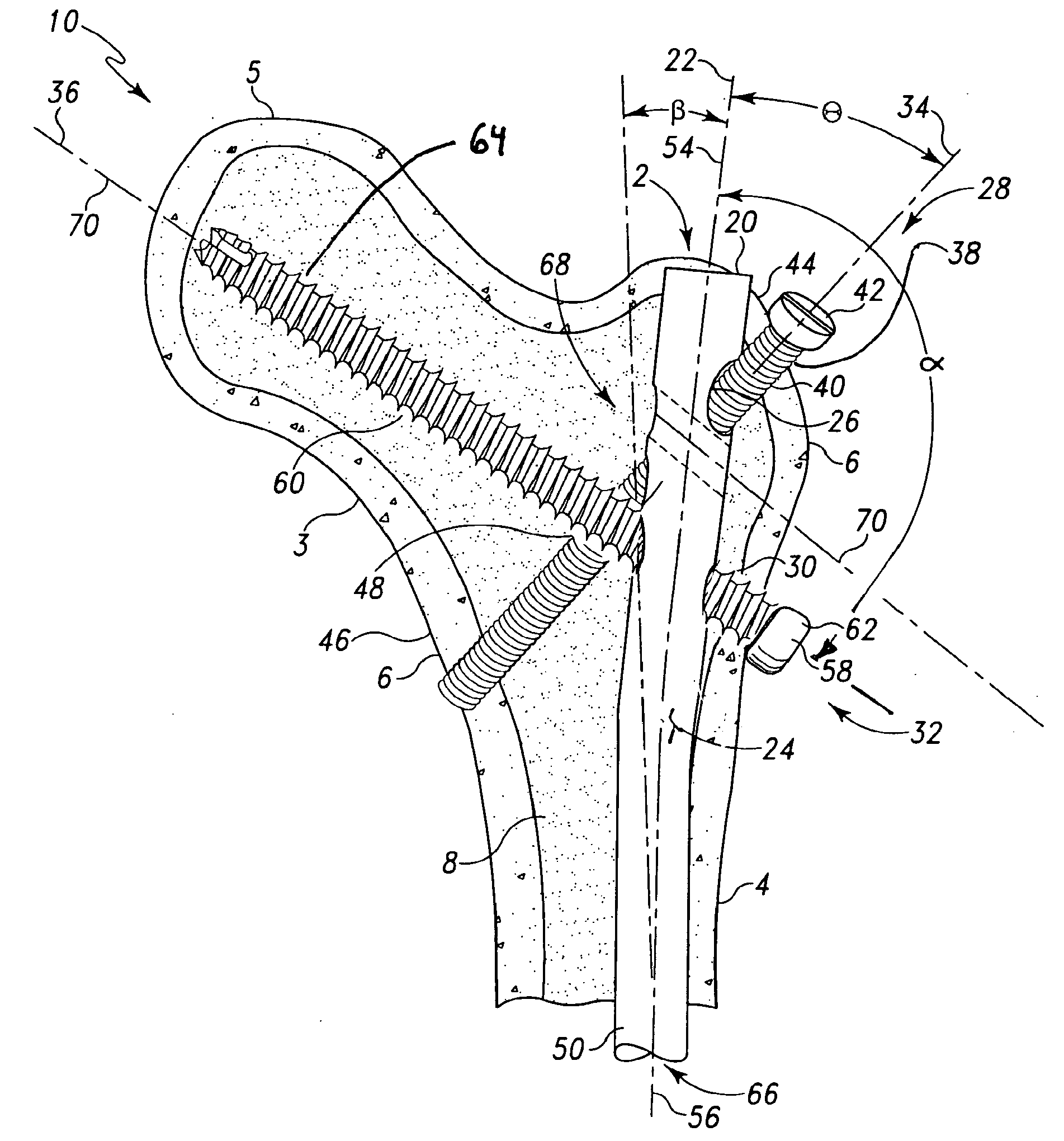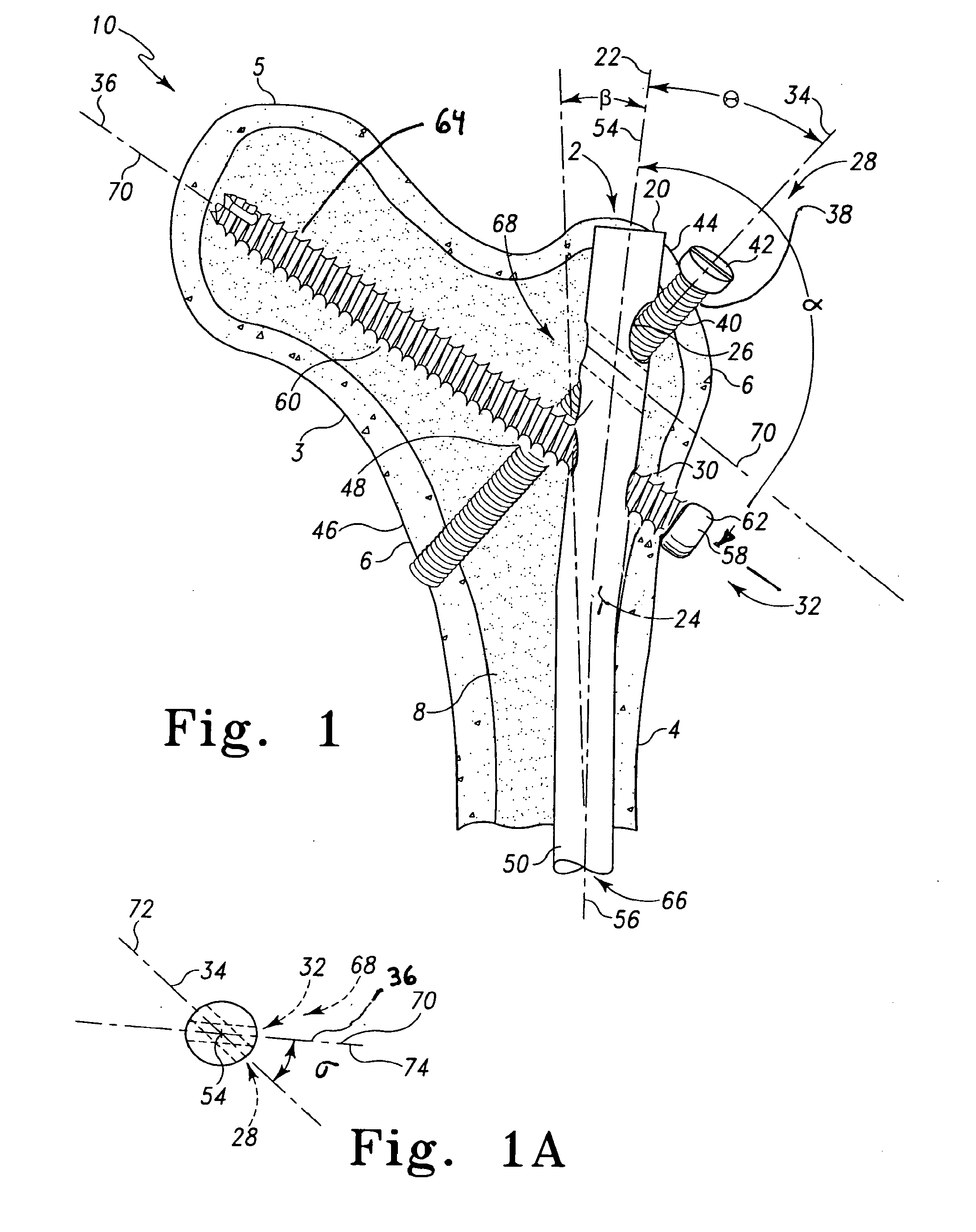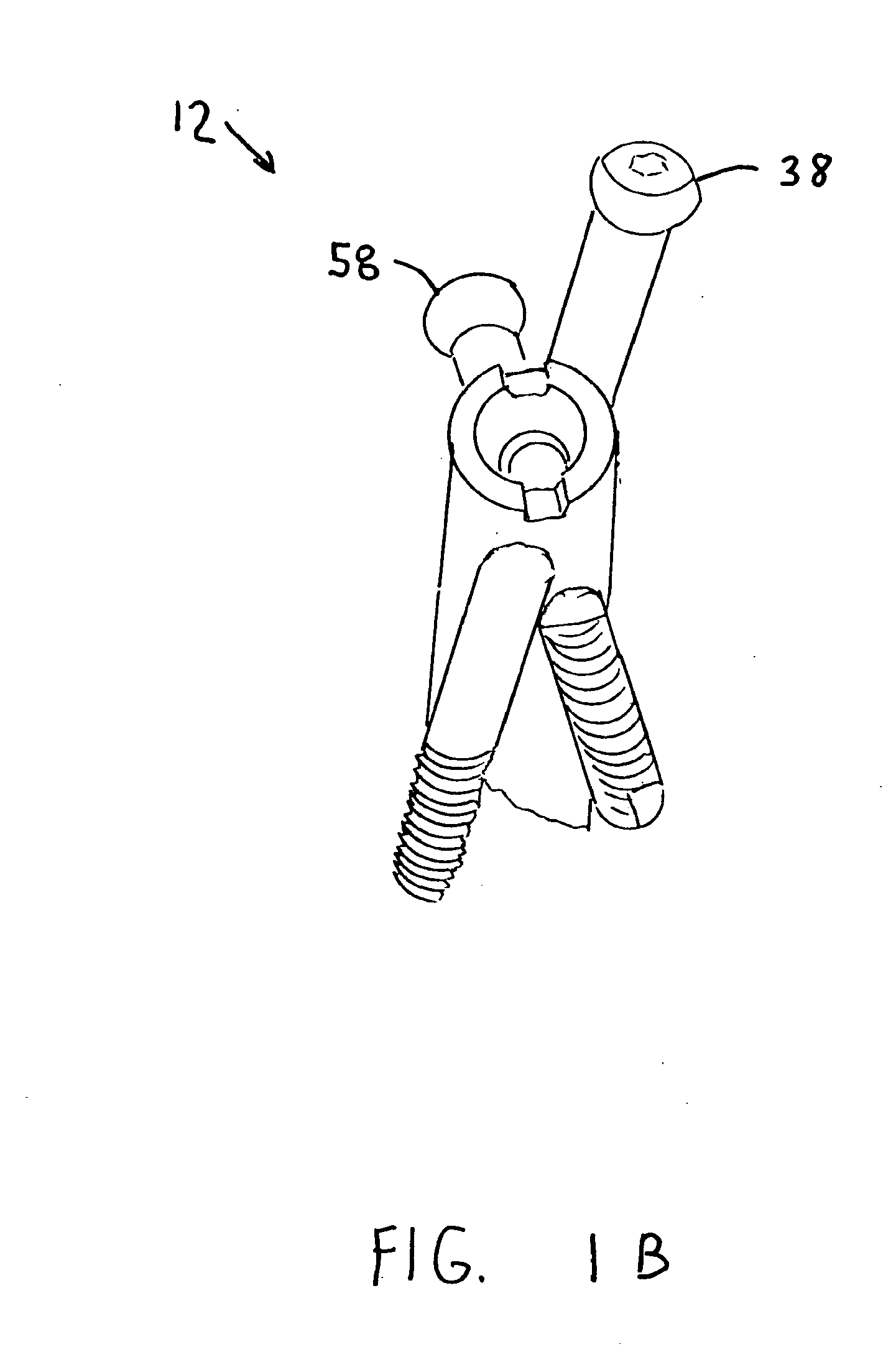Intramedullary nail with oblique openings
a technology of intramedullary nail and oblique opening, which is applied in the field of orthopaedics, can solve the problems of complex devastating fractures, femur and tibia frequently fractures, and trauma to long bones, and achieve the effect of improving stability
- Summary
- Abstract
- Description
- Claims
- Application Information
AI Technical Summary
Benefits of technology
Problems solved by technology
Method used
Image
Examples
Embodiment Construction
[0102]Embodiments of the present invention and the advantages thereof are best understood by referring to the following descriptions and drawings, wherein like numerals are used for like and corresponding parts of the drawings.
[0103]According to the present invention and referring now to FIG. 1, a first embodiment of the present invention is shown as intramedullary nail assembly 10. Intramedullary nail assembly 10 is used in a medullary canal 2 of a long bone 4. The nail assembly 10 includes a nail 20. The nail 20 defines a longitudinal axis 22 of the nail 20. The nail 20 further includes an external periphery 24 of the nail 20. The external periphery 24 of the nail 20 is adapted for fitting in the medullary canal 2 of the long bone 4. The long bone 4 may be any long bone in the human anatomy. For example, the long bone 4 may be a femur, a tibia, a humerus, or any other long bone. Preferably, the long bone in which the nail of the present invention is used is a humerus, a femur, or ...
PUM
 Login to View More
Login to View More Abstract
Description
Claims
Application Information
 Login to View More
Login to View More - R&D
- Intellectual Property
- Life Sciences
- Materials
- Tech Scout
- Unparalleled Data Quality
- Higher Quality Content
- 60% Fewer Hallucinations
Browse by: Latest US Patents, China's latest patents, Technical Efficacy Thesaurus, Application Domain, Technology Topic, Popular Technical Reports.
© 2025 PatSnap. All rights reserved.Legal|Privacy policy|Modern Slavery Act Transparency Statement|Sitemap|About US| Contact US: help@patsnap.com



